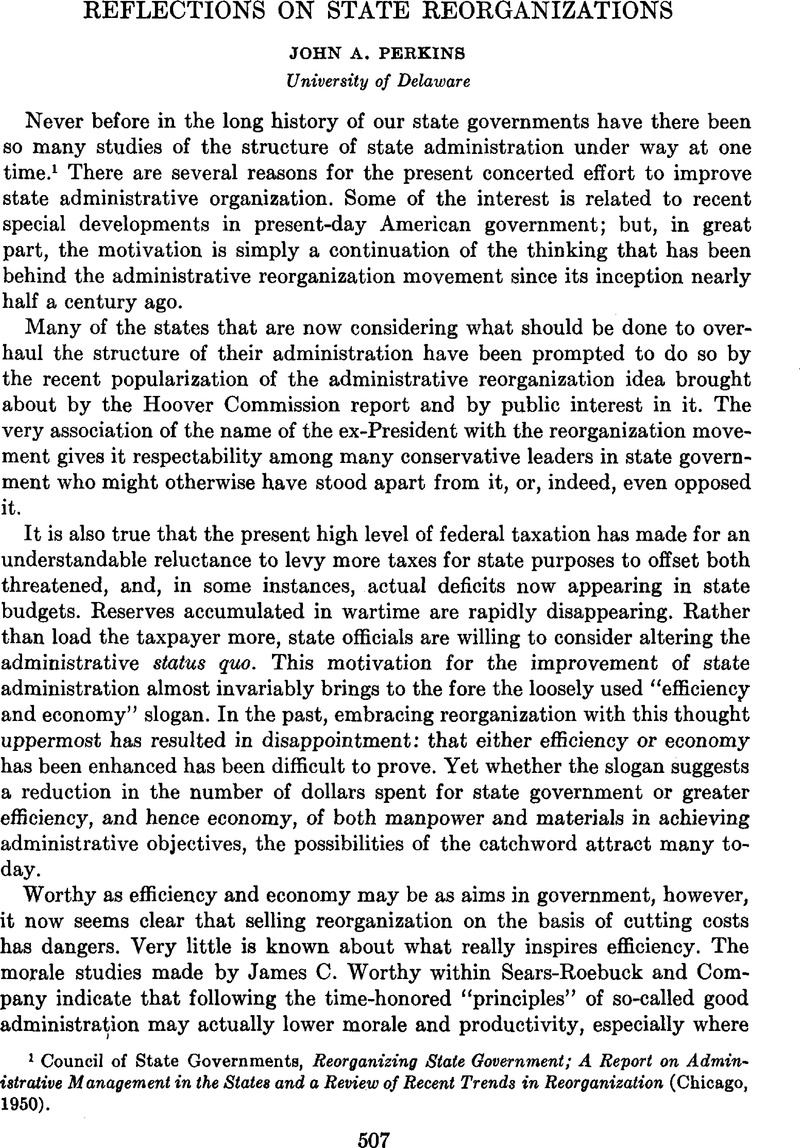No CrossRef data available.
Article contents
Reflections on State Reorganizations
Published online by Cambridge University Press: 02 September 2013
Abstract

- Type
- Notes and Memoranda
- Information
- Copyright
- Copyright © American Political Science Association 1951
References
1 Council of State Governments, Reorganizing State Government; A Report on Administrative Management in the States and a Review of Recent Trends in Reorganization (Chicago, 1950)Google Scholar.
2 See “Organizational Structure and Employee Morale,” American Sociological Review, Vol. 15, pp. 169–179 (April, 1950)CrossRefGoogle Scholar.
3 At a meeting of the Midwest Political Science Association, Ann Arbor, Michigan, May 22, 1950.
4 Idem.
5 See Perkins, John A., “State Management Limited,” National Municipal Review, Vol. 39, pp. 72–78 (Feb., 1950)CrossRefGoogle Scholar.
6 Key, V. O., Southern Politics (New York, 1949), pp. 151 ff.Google Scholar
7 Dorr, H. M., Administrative Reorganization of State Government in Michigan, 1921–1936 (Bureau of Government, University of Michigan, 1936), p. 1Google Scholar.
8 In Michigan and some other states there are administrative boards composed of elected officials which are loosely referred to as the governor's cabinet or team. They are not subordinates of the chief executive but are in reality his competitors, even exercising part of his executive authority. See John A. Perkins, loc. cit.





Comments
No Comments have been published for this article.